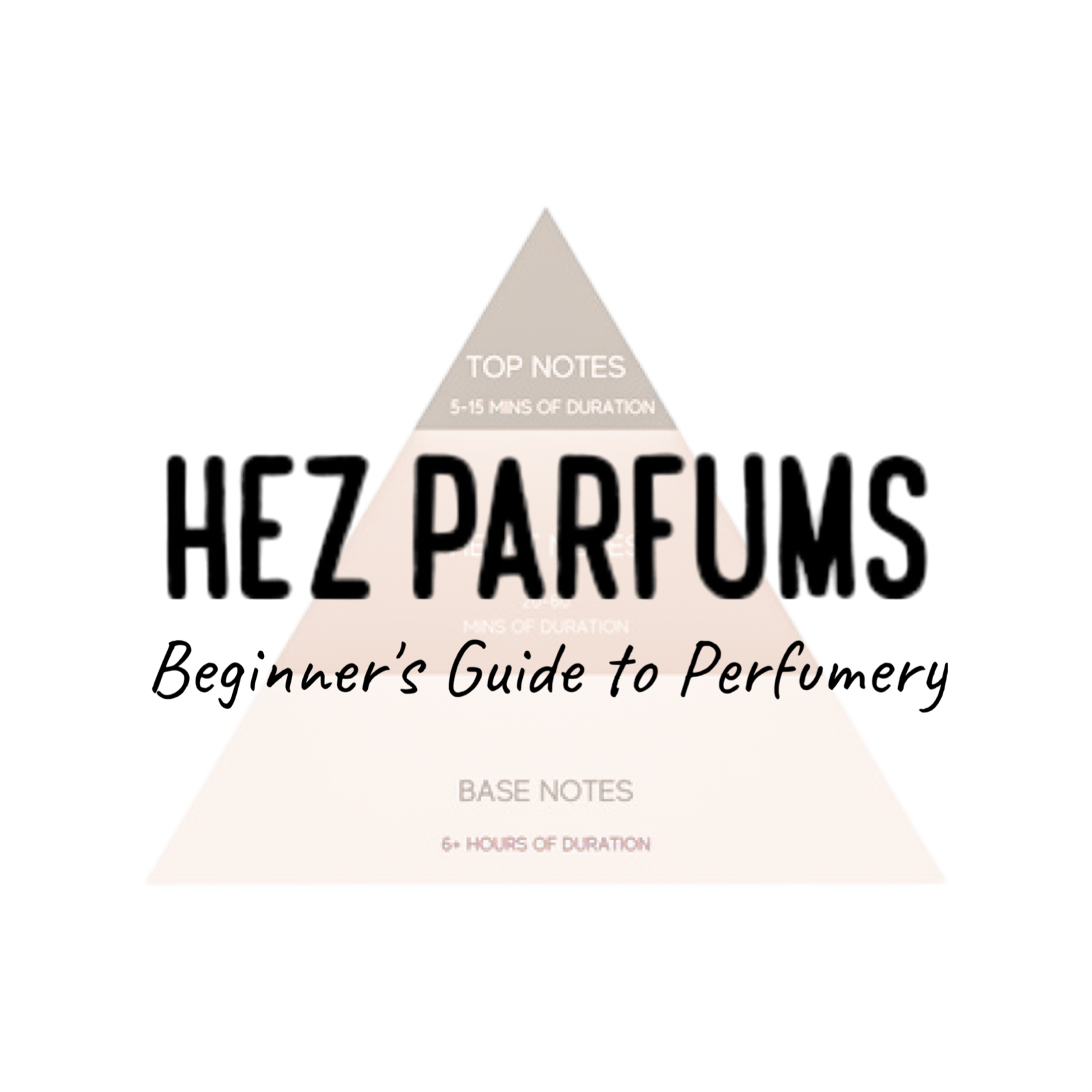Hez Parfums Beginner's Guide to Perfumery 010 - The Art of Harmonizing Fragrance Notes

Hez Parfums Beginner's Guide to Perfumery 010 - The Art of Harmonizing Fragrance Notes
In the intricate world of perfumery, harmonizing fragrance notes is akin to composing a symphony. Just as a musician blends chords to craft a melodious tune, a perfumer combines different fragrance notes to create a well-balanced and enchanting scent experience. Let’s explore how notes are harmonized in perfumery, with insights from industry experts and examples of fragrance formulas.
Understanding Fragrance Notes
Perfumery is structured around three core layers: top, middle (heart), and base notes. Each layer serves a distinct role in the fragrance's profile, contributing to its complexity and longevity.
1. Top Notes
Top notes are the initial scents that hit your senses upon applying a perfume. These notes are typically light, fresh, and evaporate quickly. They create the first impression and are often composed of citrus fruits, herbs, or light floral elements. As Jean-Claude Ellena, a renowned perfumer, once said, “The top note is like the first chapter of a novel; it sets the stage for what’s to come.”
Example Formula for Top Notes:
- Bergamot (10%)
- Lemon (8%)
- Mint (5%)
- Lavender (3%)
2. Middle Notes
Once the top notes begin to fade, the middle notes, or heart notes, start to emerge. These notes form the core of the fragrance and are more complex and enduring. They provide depth and character, bridging the transition from the top to the base notes. Common middle notes include floral, fruity, and spicy elements. “The heart of the fragrance is where the story truly begins,” notes Luca Maffei, an acclaimed perfumer. “It’s where the essence of the perfume reveals itself.”
Example Formula for Middle Notes:
- Jasmine (15%)
- Rose (12%)
- Cinnamon (6%)
- Peach (5%)
3. Base Notes
Base notes are the foundation of a fragrance, becoming apparent after the perfume has settled, usually several hours after application. These notes are deep, rich, and long-lasting, providing depth and longevity to the scent. Ingredients such as vanilla, musk, and sandalwood are common in this layer. As perfumer Christopher Sheldrake explains, “Base notes are the roots of a perfume. They provide stability and depth, ensuring that the fragrance lingers and evolves over time.”
Example Formula for Base Notes:
- Sandalwood (12%)
- Vanilla (10%)
- Musk (8%)
- Patchouli (6%)

The Art of Harmonizing Notes
Harmonizing notes in perfumery requires a blend of skill, artistry, and science. Here’s how perfumers achieve this delicate balance:
- Skillful Blending: Master perfumers expertly blend notes to ensure a smooth transition from one layer to the next. The goal is to create a fragrance that evolves gracefully over time. “Blending is an art form,” says Bertrand Duchaufour, a distinguished perfumer. “It’s about creating a seamless progression that feels natural and harmonious.”
- Ingredient Interaction: Understanding how different ingredients interact is crucial. Some notes may enhance or alter the perception of others, so perfumers must carefully select and balance these components. “It’s a chemistry of emotions,” explains perfumer Patricia de Nicolai. “The interaction between ingredients can elevate a fragrance from pleasant to extraordinary.”
- Testing and Adjusting: Perfumers rigorously test their blends and make adjustments to ensure the perfume develops as intended. This process involves evaluating how the fragrance performs over time and refining it to achieve the desired effect. “Perfumery is a continual process of trial and refinement,” notes Thierry Wasser, a prominent perfumer. “It’s about finding that perfect balance.”
Example of a Complete Fragrance Formula
To illustrate the concept of harmonizing notes, here’s an example of a complete fragrance formula that blends top, middle, and base notes into a cohesive scent profile:
Complete Fragrance Formula:
- Top Notes:
- Bergamot (8%)
- Lemon (6%)
- Mint (4%)
- Lavender (2%)
- Middle Notes:
- Jasmine (10%)
- Rose (8%)
- Cinnamon (4%)
- Peach (3%)
- Base Notes:
- Sandalwood (8%)
- Vanilla (6%)
- Musk (5%)
- Patchouli (4%)
Conclusion
The art of harmonizing fragrance notes is a complex and fascinating process that parallels musical composition. By blending top, middle, and base notes with expertise and precision, perfumers create fragrances that offer a rich and evolving sensory experience. As perfume critic Chandler Burr aptly puts it, “A well-harmonized fragrance is like a great piece of music. It captures the essence of its creator and resonates with the soul.”
Whether you’re a seasoned fragrance enthusiast or simply curious about the magic behind your favorite scents, understanding the harmony of perfume notes deepens your appreciation for this captivating craft. Each fragrance tells a story, and every layer contributes to its unique narrative, making the world of perfumery an enchanting realm to explore.

